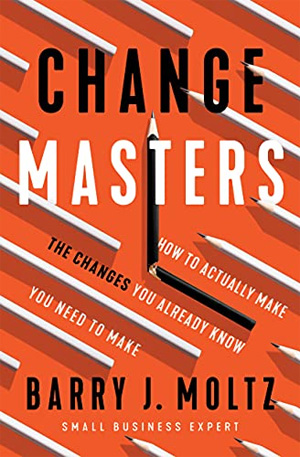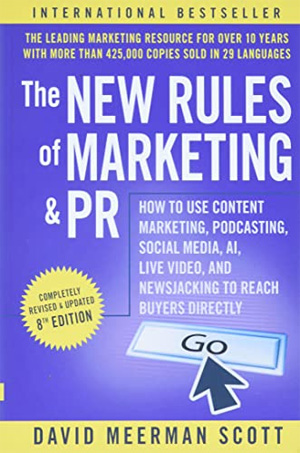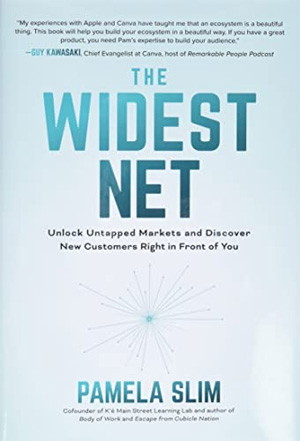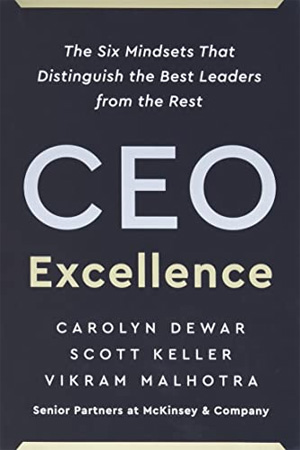By Lane Ellis
Looking for inspiration and new insight to forge new B2B marketing successes as we drive ahead to 2023?
We’re taking a look at five forthcoming or recently-published books that offer an array of fascinating tactics, tips, case studies, and other insight from some of the industry’s top business marketers and subject matter experts.
A good marketing book will not only help you stay current with the latest B2B marketing industry trends, but also gain inspiration in the process — and we’ve compiled a list of books that fit the bill on both counts.
Let’s turn the page and jump right in with our list of five new marketing books every B2B marketer can learn from.
1 — Everybody Writes: Your New and Improved Go-To Guide to Creating Ridiculously Good Content (2nd Edition)
Ann Handley
MarketingProfs logo
Chief Content Officer, MarketingProfs
The much-anticipated second edition of Ann’s popular “Everybody Writes,” which is used in college classrooms and by writers the world over, will be released on October 18, 2022, when B2B marketers will be able to read the completely revised and expanded update to this marketing and writing classic.
“Everybody Writes: Your New and Improved Go-To Guide to Creating Ridiculously Good Content” is slated to include all-new examples, an even-more-detailed writing framework, and new material reflecting the latest changes in content marketing since the original version was published.
2 — Change Masters: How to Actually Make The Changes You Already Know You Need to Make
Barry J. Moltz
Speakers & Author, Shafran Moltz Group, LLC
In “ChangeMasters: How To Actually Make the Changes You Already Know You Need To Make,” Barry shares his small business subject matter expertise, including an examination of just why change is so difficult, and how to focus on and complete the critical changes that will make a difference.
From the brain science behind the mechanisms of change to how various areas of business can create change and more, Barry’s book offers helpful take-aways B2B marketers can apply in multiple areas of their professional and personal lives.
3 — The New Rules of Marketing and PR: How to Use Content Marketing, Podcasting, Social Media, AI, Live Video, and Newsjacking to Reach Buyers Directly
David Meerman Scott
Limited Partner and Strategic Advisor, Stage 2 Capital, also Entrepreneur, Advisor, Keynote Speaker and WSJ Bestselling Author, Freshspot Marketing
A new eighth edition of David’s book “The New Rules of Marketing and PR: How to Use Content Marketing, Podcasting, Social Media, AI, Live Video, and Newsjacking to Reach Buyers Directly” has recently been released, updated with new techniques and information that will be of interest to B2B marketers.
From details blueprints and strategies for getting your ideas implemented to generating buyer attention, the latest edition of David’s book offers a helpful look at both fundamentals and the current state of marketing.
David has also published the well-received “Fanocracy” book, which our CEO Lee Odden covered in “How to Tap the Most Powerful Marketing Force in the World – Fanocracy.”
4 — The Widest Net: Unlock Untapped Markets and Discover New Customers Right in Front of You
Pamela Slim
Author, Speaker and Small Business Strategist
Pamela’s “The Widest Net: Unlock Untapped Markets and Discover New Customers Right in Front of You” explores an array of dynamic ideas for creating marketing and business customer connections that may be outside your usual field of view.
The Widest Net utilizes case studies and examples to take a deep dive into creating newfound business and marketing success.
5 — CEO Excellence: The Six Mindsets That Distinguish the Best Leaders from the Rest
Carolyn Dewar
Global Practice Leader – CEO and Board Excellence, McKinsey & Company
Scott Keller
Global Practice C0-Leader – CEO Excellent, McKinsey & Company
Vikram Malhotra
Senior Partner, McKinsey & Company
New York Times and Wall Street Journal bestseller “CEO Excellence: The Six Mindsets That Distinguish the Best Leaders from the Rest” looks at successful chief executives from global major organizations including Netflix, JPMorgan Chase, General Motors, and Sony, and explores the unique qualities that we can all learn from them.
Carolyn, Scott, and Vikram’s book provides B2B marketers a helpful look at what we can learn from the way that CEOs shape culture, and how they in turn are changed by it.
Learn From B2B Marketing Page-Turners
We hope that you’ve enjoyed our exploration of five books by these leading marketing and business authors, and that they’ll help inspire you in your own marketing work throughout the years ahead.
Looking for more books to enhance your B2B marketing and related skills? Check out these other articles we’ve published:
- Read It & Reap: 11 Top New Marketing Books To Savor On #NationalBookLoversDay
- 10 SEO Books for B2B Marketers
- Brian Solis on Lifescale – How to Live a More Creative, Productive and Happy Life Plus Improve Your Marketing
- How to Tap the Most Powerful Marketing Force in the World – Fanocracy
- The Future (& Present) of Marketing: Collaboration, Technology & Innovation
Building award-winning digital experiences featuring elements such as those explored in the books we’ve featured here takes significant time, resources, and effort, which is why many of the world’s top B2B brands choose to partner with a leading B2B marketing agency. Contact us today and learn why for more than 20 years brands from LinkedIn and 3M to Dell and Adobe have chosen to work with TopRank Marketing.
By Lane Ellis
Lane R. Ellis (@lanerellis), TopRank Marketing Social Media and Content Marketing Manager, has over 38 years’ experience working with and writing about the Internet. Lane spent more than a decade as Lead Editor for prestigious conference firm Pubcon. When he’s not writing, Lane enjoys distance running (11 marathons including two ultras so far), genealogical research, cross-country skate skiing, vegetarian cooking, and spending time with his wonderful wife Julie Ahasay and their cat Kukla in beautiful Duluth, Minnesota.







